Virtual Plant Walk part 1
Let's go for a walk...
Hey ya'll! I got a cool idea this morning.
I do in-person plant walks on occasion. Folks come and pay a sliding scale donation and I show them plants while we walk around seeing what we find.
I've done them in (all in the U.S.) California, New Hampshire (mostly via snowshoe in winter!) and also in Virginia and North Carolina.
Though I've traveled all over, the plants in these places I am most familiar. I thought I'd take a handful of plants from my photo library and talk about them the way I might on a plant walk. I'll do several of these in a series over time. It's fun for me to do this, and also helps spur my memory of what I know about plants from the top of my head.
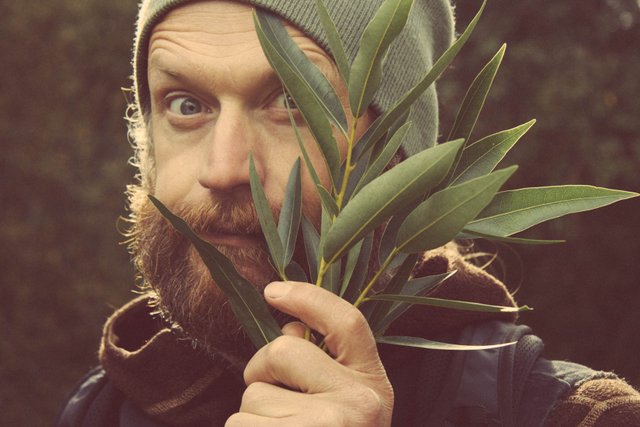
So here, Eric is holding the leaves of California Bay Umbellularia californica , in the Lauraceae plant family.
So in California, especially in the Redwood forest and coastal ranges, you find this tree. Sometimes you can smell it from far away, even driving with your car windows down. When it rain, it especially fills the air with it's essential oil rich almost Eucalyptus strong scent. In the Sierra foothills of California, which is on the east side of the state (but the west side of the mountain range, which gets the coastal moisture) you also find California Bay, especially on the north facing slopes and along the deep caverns of steep rivers and creeks.
It is related to the Bay that you commonly know for cooking, at least many of the species we know as 'Bay leaf' are in the same plant family. Some are not though. Some folks use this species of Bay in the same way, I think it is incredibly strong and should be used really lightly internally. It is so strong sometimes, that just inhaling a leaf could give one a migraine, or take away a migraine, depending. I think it is great infused in apple cider vinegar, and then used to clean surfaces with in your home as a natural cleaner. I also put it in a bathtub on occasion, especially for when I am achey. I have also used it in cooking, as a flavor agent, food as medicine, or digestive aid, but I tend to put a half a leaf or so in the mix. Some folks will throw a leaf into a steam inhalation for colds.
So here we are skipping to New Hampshire from California. This is the bark of Paper Birch Betula papyrifera, in the Betulaceae plant family.
When I used to work at a family-owned cross country ski area in my early 20's, I would teach snowshoe led tree walks in the dead of winter, especially on busy Saturday's. I'd usually get 10-15 people or so. I spent a lot of time on the cross country ski trails and off trail in the woods, looking at the trees and animal tracks. The forest where I worked and lived was full of different Birch species including Yellow Birch (a super hard wood I burned in my wood stove), White / Paper Birch (shown here, faster growing and shorter lived), Black Birch (harder wood, smells like Wintergreen, has the same constituents, as well as yellow birch, 'methyl salycilates'), Gray Birch (soft wood, fast growing especially after logging, often hybridizing with White Birch).
The folks I worked for were also experienced foresters, so I learned a lot from them about northern trees. I would help them do logging work when we had no snow. That meant I was out in the forest during 0 degree F days bundled up and splitting log rounds on a mechanical wood splitter, sometimes having to pry the rounds out of the frozen ground with a crowbar. I have to say, my arm muscles were a lot bigger then than they are now. Often I'd be chopping or splitting Black and Yellow Birch, and the air would fill with the smell of Wintergreen.
With that said, the primary medicine of Birch--any species of Birch regardless of it containing the aromatic compounds, is its anti-inflammatory nature. If you live in a northern climate, you'll notice that Birch bark sometimes does not degrade or rot for a very long time. This is probably also why it was used to make canoes, containers, baskets, and more by first nations peoples where Birch grows. Many species of Birch are fast growing, and come up in a young forest and then die and rot to provide nutrients for the slower growing Hemlock, Red Oak and Red Maple, for example.
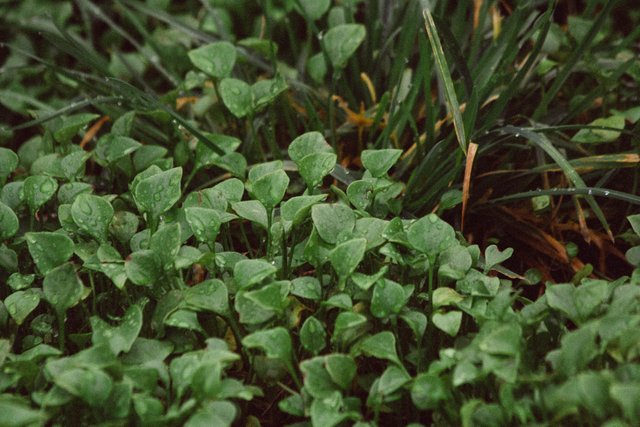
Back in California Spring, here is Miner's Lettuce (or Indian Lettuce, some say, and some indigenous folks prefer this name) which comes up slowly as the rains become more frequent from November to May. It's scientific name is Claytonia perfoliata and it is in the Montiaceae plant family- not a common plant family to have things called 'lettuce' coming from.
Most of the lettuces we know of in our gardens come from the Asteraceae plant family, and our spicy greens and cruciferous favorites like Cabbage, Broccoli, Turnip and more come from the Brassicaceae plant family. This plant is called 'Miner's Lettuce' because in the Sierra foothills where it grows abundantly, the first white and brutal resource extracting settlers were gold miners who pretty much killed 95% of the native folks who had been living on the land where gold was found. Instead of working with them and gleaning knowledge about the local wild foods one could eat, they pushed them off their land or horridly exterminated them. I say this because behind every 'wild plant' story, is a story of native folks who ate the plant or used it for medicine. And, the recent history of colonization in the so called United States is fresh and real.
This plant contains a lot of Vitamin C and is generally pretty neutral in taste. Miner's in mining camps ate it to prevent scurvy. In the Sierra foothills, the summers are devoid of wild greens, and the temperatures often get into the 100's during the day (Fahrenheit). So once the rains start, it is a sweet relief. It's a time where things begin, versus in other areas, where fall is the time where things go downward. The acorns and bay nuts are dropping, the roots are being dug, the greens start to come up.
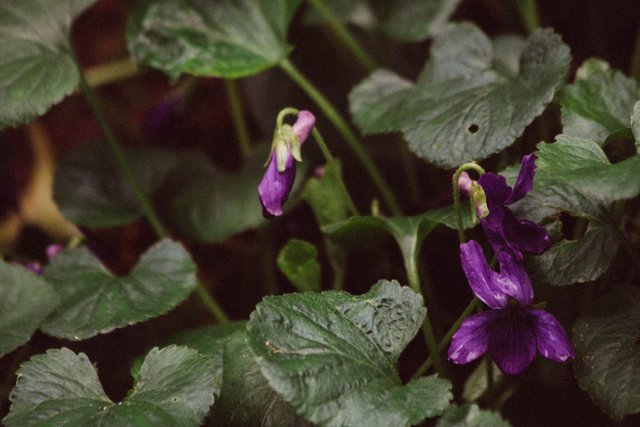
This is Violet! Viola spp. (Violaceae)
This plant can be found a lot of places. It comes up in the Spring and often surprises grassy lawn owners with its purple, white or yellow flowers.
It is a great wild edible. Both the leaves and flowers can be eaten. I like to use them raw in salads. Some folks infuse Spring greens in vinegar and use the infusion in salads later in the year, as to infuse the food with minerals from the greens. Violet is commonly used medicinally too as a lymphagogue, especially for the breasts. Folks often infuse it in oil and use it for massaging the body and lymph. You can tincture it too for the same purpose. Violet has many species, and many of them can be used this way. Some species have a spicy strong compound that you don't want to eat too much of, mostly found in the roots, but sometimes in the leaves. I think this is also more commonly found in the yellow violet species.
Back in California, this is Heteromeles arbutifolia in the Rosaceae plant family.
It is called Toyon or Christmastree berry.
It is also what 'Hollywood' is named after, apparently. Toyon tends to ripen once winter is in full spring, often the only bright fruited plant around. It's berries are used to make a 'cider' but because they are incredibly astringent, you have to roast them first. I have done this the past few winters. Its a great drink with honey added. It's not a drink I make everyday because there's still a lot of astringency even after roasting, and it can really dry you out.
That's it for this plant walk. Until next time!



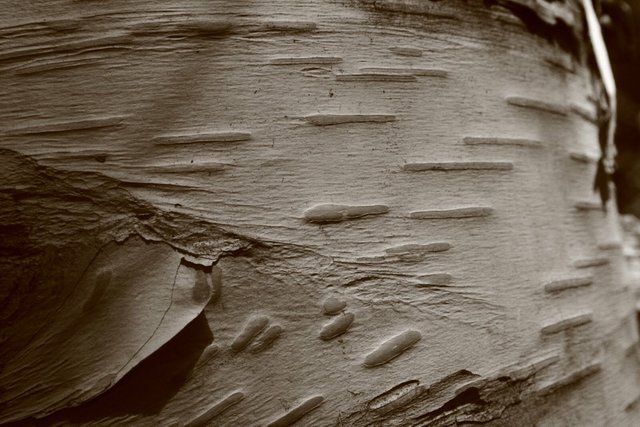
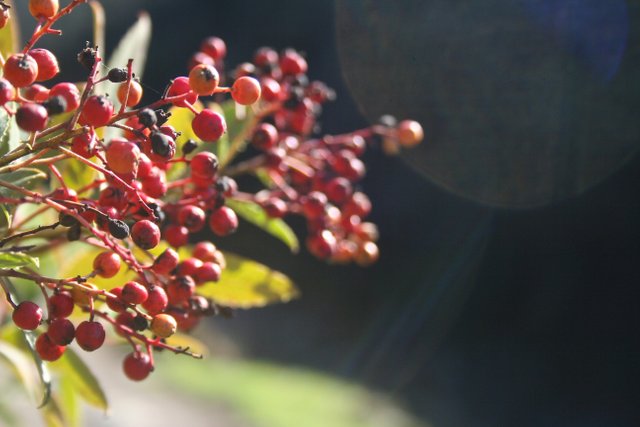
To listen to the audio version of this article click on the play image.

Brought to you by @tts. If you find it useful please consider upvoting this reply.
Ah this is an EXEMPLARY post! More please!
And DITTO for Australia.. was just saying the same thing on my blog.
Posted using Partiko Android
Thanks! @riverflows Yeah, I’m excited to do more virtual plant walks. I have quite a photo collection from over the years so it will be exciting to sift through what I have and share.
Posted using Partiko iOS
What an awesome idea! Please let me know if you ever come out to Colorado. I would LOVE to nature hike and learn about plants and trees. I've learned a ton in the past couple years about mushrooms (and some trees, as you know many are mychorrhizal) but my knowledge of the world outside of fungi is pretty dismal. We are working toward off grid living, and consider this a vital skill that is sooooo worth learning and passing on. Amazing job, sharing your knowledge and passion and spirit!
i was in colorado in may actually! i went to an herbal medicine conference in durango called the good mediine confluence. check it out! where abouts in colorado do you live? i find the land there so beautiful and fascinating..
Omg I love Durango. It's quirky and there's some amazing local eats there too. I live near Colorado Springs, close to pikes peak. 😊 But I've traveled almost the whole state, I just can't get enough. I'll definitely be checking out that event!
Also if you love Colorado you would love Utah as well. It's like another planet. And night hiking there is beyond incredible.
sometimes i think about moving to Colorado... i did go to Utah this Spring as well. I have a friend in Moab. I actually interviewed her for my podcast (she's an herbalist). Look up 'The Ground Shots Podcast' on any site- iTunes, Spotify, etc. She talks about regional issues there. I love the area but it feels like the moon sometimes... its intense.
I second that thought... Full moon walks out there are just pregnant with energy and its a lot to handle.
Thank you for the podcast recommendation, I'll be checking it out! So much great stuff people are offering. 😊🙏
oh the full moon... i just flew in an airplane traveling and it was large and intense. enjoy the podcast!
I really loved reading this - thank you! I would treasure going on a nature walk with you.
I am extremely fond of birch. We have a lot of white birch on our property and I've been studying and sustainably using it for quite a long time. The depths of it's healing abilities just amaze me. Such a gift! I've been out looking for a fallen tree so that we can harvest the bark. No luck yet but we've got plenty more ground to cover.
Glad you liked it! Birch is a special tree / set of trees. I miss living where they grow. Have you ever tapped them for syrup - like Maple?
It really is special. I've been fortunate to always live where they grow. Yes we have tapped the trees. I love drinking the fluid, it is so refreshing. Making the syrup is a bit of a chore though. I spent two days reducing a huge stock pot full, only to end up with a shot glass of syrup. It takes an average of 110 gallons of sap to make 1 gallon of birch syrup - eek! But it is soooo good!
wow that is quite the reduction!
We'll still tap a tree for the sap to drink fresh but I don't think we'll do the syrup again. Now I understand why they charge so much for just a little bottle of the syrup!
i heard that it takes a lot more than maple... like way a lot. probably why it doesn't get used so much in production. wouldn't it be amazing to make medicine out of birch syrup....
That would be amazing! The fresh sap is so refreshing. It only keeps for about a week though. I've wondered how they manage to bottle it and sell it in Europe without it spoiling.
oh interesting... hmm. who knows.
love this idea kelly! hope you keep it up :) seems to get good feedback from the community, too! i am so drawn to that picture of the birch. i really like that photo. captures the round fullness of trees more than photos usually do...
i took that one back in new hampshire YEARS ago... in the summer. I love shadows on trees and black and white photography of plants. I haven't done as much black and white lately. oh those lenticils....